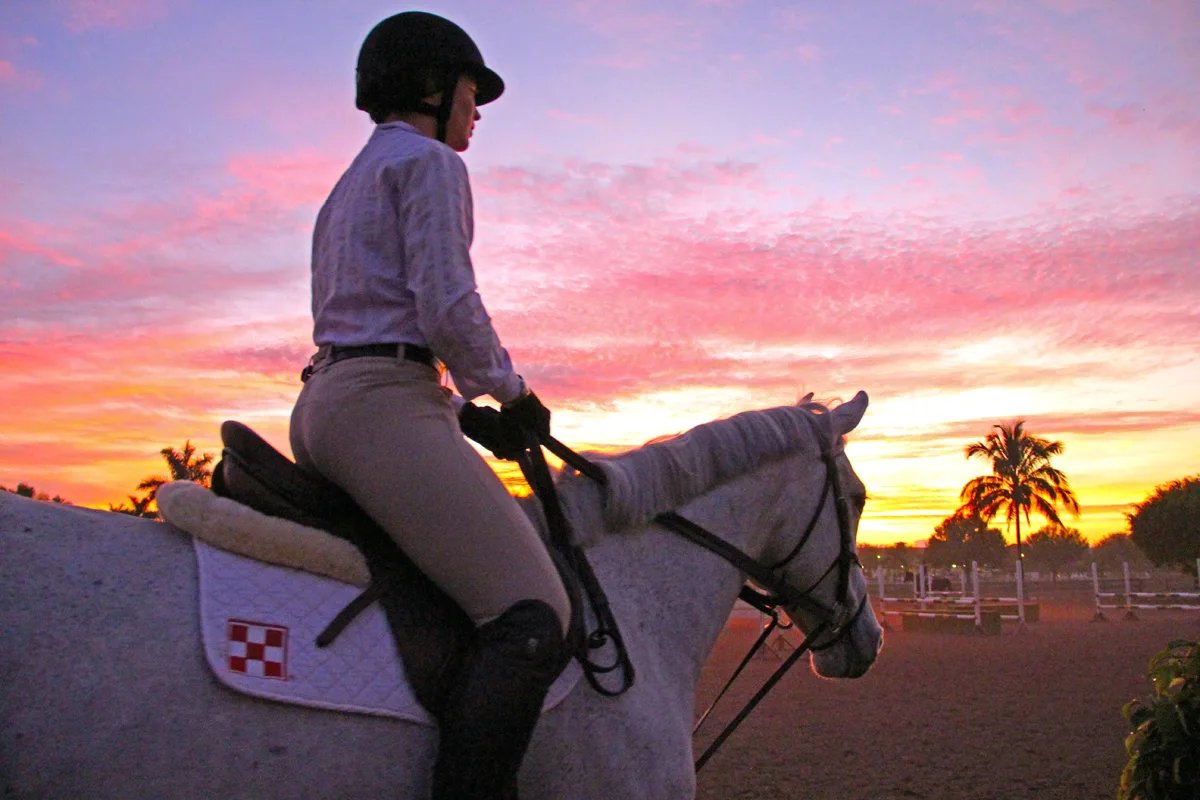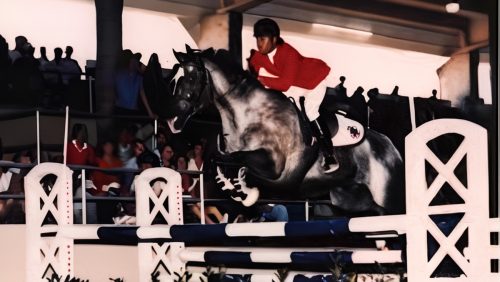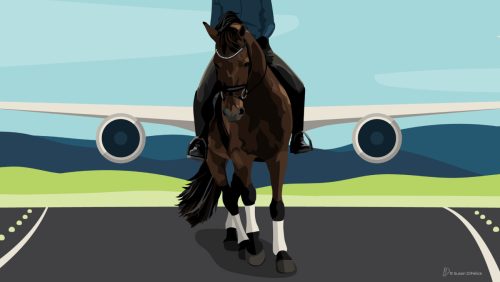We are closing in on the last few weeks before the entry deadline for the John Madden Sales Breeder’s Bridge contest. The entries we have received have been a steady flow of quality animals, and I will be looking to John and Beezie Madden to help guide the choice in semi-finalists, trusting their eye for excellence.
Almost two years ago I was able to see their quick eye for talent when Wrigley first came to the United States as a prospect for me to develop. Wrigley is a 9-year-old Dutch Warmblood (Padinus—Roxanne B). John liked her immediately; she was a lighter warmblood, resembling the Thoroughbred-type John and Beezie like so much. Wrigley was 7 at the time, but she was very green, having spent time as a broodmare in Europe. It was clear from the first jump that she was talented, but the rideability was not quite there. We had an occasional lack of steering that could be a little disconcerting.
John said to me simply, “If she was talented AND rideable, we couldn’t afford her.” He was confident that time and training would fix the green issues, and in the end we would have a nice top horse.
Making Progress
In 2010, we started her in the spring in the 1.20-meter classes. She felt trainable, and I could feel improvement over the course of that first week. We ended up pinning fifth in our last 1.20-meter class. It was a good start, and we headed home to Cazenovia, N.Y., to train on our grand prix field before heading to Spruce Meadows. The first season’s focus was on exposure to numerous lower classes, at the 1.20- to 1.30-meter level, and slowly fixing our steering. We got her teeth floated and spent some time trying to find the right bit for her, as she clearly had very strong opinions on what she did and didn’t like in her mouth.
After the American Gold Cup in September of 2010, we pulled Wrigley’s shoes and turned her out for two months with our field horses (a mix of young stock and retired horses). A few months of turnout seemed to do good things for her mind, and when she came back in from the field a few weeks before we headed to Florida for the start of the 2011 season, she seemed as though she had matured a bit.
ADVERTISEMENT
We headed south to Wellington and started out the 2011 season in the high training classes. We then moved into the 8-year-old classes and ended up doing the Young Riders classes, where we ended up seventh overall. We kept raising the bar for Wrigley, and she kept rising to each occasion.
After Florida, we went to Old Salem (N.Y.) for two weeks where she won a 7- & 8-year-old Young Jumper class. We then headed back to Calgary for Spruce Meadows, and it was then that John and Beezie said Wrigley was ready to move up to the 1.45-meter division. I remember walking the first 1.45-meter course and thinking how big those fences looked. Of course, I had jumped that big or bigger, but there was still a twinge of doubt knowing I had done all the preparation on Wrigley. Her training had solely been my responsibility—of course guided by John and Beezie—but I worried briefly that she wasn’t ready.
John has a great philosophy on training for both horses and riders, which gave me the little push I needed to get in the ring that day with Wrigley and jump around our first 1.45-meter class at Spruce. He believes if you wait until you’re perfect at the level you’re doing before you move up, you’ll never move up. Horses get old quickly, and sometimes there is a point where you need to push a little, or else they’ll never advance. If you don’t push you might spend years and years developing a horse, only to find it doesn’t have the talent to do the upper levels.
Taking Care Of Details
Of course, the 1.45-meter class went fine, and we left Spruce with a good dose of confidence. John and Beezie headed to Europe, and I headed to the farm in Cazenovia to give Wrigley a little break before showing for two weeks at the Vermont Summer Festival.
Wrigley was amazing at Vermont, coming in second both weeks in the grand prix. In the fall of 2011 she went to the New Albany Classic (Ohio), where she placed 12th, and the Pennsylvania National, where she was third in the Gambler’s Choice. Following that, she once again went home, had her shoes pulled, grew a nice coat and had a nice early winter break enjoying the snow in Cazenovia.
ADVERTISEMENT
January 2012 found us back in Wellington for three months, and Wrigley was ready for the “big stuff.” She went in the grand prix the third and fourth weeks, and those were probably her biggest classes to date. We also showed out on the grass Week 6 in the jumper classic, another class where I remember thinking, “Those jumps look a little big.” She was rideable and clearly capable, but after a few weeks at that level, John suggested we move her back down.
The reasoning behind it is that we know she is capable, but just because she’s capable doesn’t mean she should do it all the time. She has the talent, but now comes the “layering” part of her training. Earlier, we pushed a little to move her up, but now we have to go back and finesse the details. Fine-tuning her in the smaller classes where we’re riding for the purpose of training, not winning, will make the difference in the long run between clear rounds and 4-fault rounds.
I think this is the point where it can be easy to get overenthusiastic in developing a grand prix horse. Wrigley is jumping around the international level grand prix classes and doing decently. It would be easy to want to push now, but John and Beezie are right—for her long term career, she needs to move back down, focus on the ride between the fences and keep building her confidence.
It has been an extraordinary process to bring such a talented horse along with John and Beezie guiding each step. Of course, Wrigley isn’t my first green horse, but seeing the purpose behind each decision and understanding the reasoning on when to push and when to ease up is probably the biggest lesson I’ve learned. I can’t wait to see what the next year brings for Wrigley and the new prospects from the Breeder’s Bridge contest.
Young grand prix rider Callie Schott, who works with John and Beezie Madden, is giving Chronicle readers a sneak peek into the daily life of a top jumper barn in her blogs. Her first blog talked about the Breeder’s Bridge To High Performance contest, and Callie was featured in the Chronicle’s article The Path To Grand Prix Is Paved With Hard Work.















